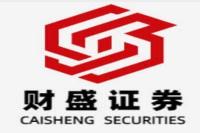Nvidia's AI-RAN: Revolutionizing 5G with Artificial Intelligence – A Deep Dive
Meta Description: Explore the groundbreaking AI-RAN technology developed by Nvidia and SoftBank, transforming 5G networks with AI and unlocking massive revenue potential for telecoms. Learn about its applications, cost-effectiveness, and future implications. #AIRAN #Nvidia #5G #AI #Telecom #SoftBank #ArtificialIntelligence #NetworkTechnology
This isn't just another tech story, folks! This is about a seismic shift in how we think about 5G and the potential for artificial intelligence to reshape our digital world. Imagine a future where your phone isn't just a communication device, but a powerful AI assistant seamlessly integrated into a lightning-fast network. That future is closer than you think, thanks to Nvidia and SoftBank's revolutionary AI-RAN (Artificial Intelligence Radio Access Network). This isn't some pie-in-the-sky concept; it's a technology currently undergoing trials, showing astonishing results and promising a multi-billion dollar opportunity for the telecom industry. We're talking about a paradigm shift, a game-changer that promises to redefine how we experience connectivity and AI. Get ready to dive deep into AI-RAN, uncovering its intricate workings, uncovering its potential, and exploring the implications for the future. We'll be examining the technology, its applications, its cost-effectiveness, and addressing crucial questions surrounding its integration and impact on the global telecommunications landscape. Buckle up, because this is a journey into the heart of the next generation of networking! We'll cover everything from the technical nitty-gritty to its real-world applications, and even address those nagging doubts and concerns some industry experts have voiced. This isn't just a story; it's a glimpse into the future of connectivity, powered by AI.
AI-RAN: The Future of 5G Networks?
Nvidia, the undisputed leader in AI chip technology, is making waves in the telecom sector. Their collaboration with SoftBank has yielded a groundbreaking innovation: AI-RAN. This isn't just an incremental improvement; it's a radical reimagining of the 5G Radio Access Network. Essentially, AI-RAN merges the realms of AI and 5G, creating a network capable of handling both workloads simultaneously. Think of it as a multi-purpose tool, unlike traditional 5G RAN systems that operate on single-purpose infrastructure, transforming cost centers into revenue generators. The implications? Well, let's just say it's a whole lot of potential.
This innovative technology boasts several key advantages:
- Enhanced Efficiency: AI-RAN, built on Nvidia's Aerial RAN, boasts a 40% reduction in deployment power consumption compared to traditional 5G RAN systems (measured in Watts/Gbps). This translates to significant cost savings for telecom operators.
- Revenue Generation: The financial upside is staggering. Nvidia claims that for every dollar invested in AI-RAN infrastructure, telecom operators can generate approximately five dollars in AI inference revenue. That's a seriously lucrative return on investment.
- Scalability and Flexibility: The AI-RAN architecture is designed for scalability, allowing telecoms to adapt and expand their networks as demand grows. It's future-proof, ready for the demands of 6G and beyond.
Nvidia Aerial RAN: The Engine Behind the Revolution
The power behind AI-RAN lies in Nvidia's Aerial RAN platform. This platform leverages the company's cutting-edge GPU technology to create a system capable of handling the massive computational demands of both 5G and AI workloads. But it's not just brute force; it's intelligent processing, optimized for efficiency and performance. This platform is built on Nvidia's next-generation Grace Blackwell superchip, ensuring high performance and low power consumption – a crucial factor for cost-effective deployment. This isn't just about speed; it's about smart, efficient processing power that unlocks the true potential of AI in a 5G environment.
Real-World Applications: Seeing AI-RAN in Action
The partnership between Nvidia and SoftBank isn't just theoretical; they've already demonstrated some impressive real-world applications of AI-RAN:
- Autonomous Vehicle Support: Imagine self-driving cars instantly relaying video feeds to a remote AI-powered support system, enabling real-time risk assessment and intervention. This is precisely the kind of application AI-RAN makes possible, enhancing safety and efficiency.
- Industrial Multimodal AI: AI-RAN enables advanced AI applications in factories, improving efficiency, predictive maintenance, and overall productivity. The possibilities are vast, from optimizing manufacturing processes to ensuring worker safety.
- Robotics Development: AI-RAN provides the robust and reliable connectivity needed for the development and deployment of advanced robotics applications, paving the way for more sophisticated and versatile robots. This could transform everything from manufacturing and logistics to healthcare and exploration.
These aren't just isolated examples; AI-RAN has the potential to transform numerous industries reliant on fast, reliable, and intelligent connectivity.
Cost-Effectiveness and Industry Acceptance
While the potential is enormous, some telecom operators remain hesitant. Concerns about distance limitations between mobile base stations and distributed units (DUs) equipped with GPUs have been raised. However, Nvidia counters that AI-RAN's cost-effectiveness outweighs these concerns. They project a significant return on investment, with estimations of $20 per hour in revenue per server when running AI-RAN, translating to a potential monthly income of $15,000 per server. This substantial revenue stream makes AI-RAN a compelling proposition, even considering potential initial investment costs.
AI-RAN vs. Open RAN: A Complementary Relationship
The rise of AI-RAN has sparked discussions about its relationship with Open RAN (Open Radio Access Network), another significant development in the telecom industry. Open RAN aims to create more open, vendor-neutral RAN solutions, but it has faced challenges due to performance and cost-effectiveness issues. However, Nvidia emphasizes that AI-RAN and Open RAN are not mutually exclusive; rather, they are complementary. AI-RAN enhances the capabilities of all types of RAN, including Open RAN. The future of wireless networks, according to Nvidia, lies in fully software-defined systems, and AI-RAN is perfectly positioned to support this evolution.
The Future of AI-RAN: A Glimpse into Tomorrow
Nvidia anticipates the commercial rollout of AI-RAN networks by the second half of 2025. This timeline is ambitious but achievable given the progress already made and the growing industry interest. The potential for AI-RAN to reshape the telecommunications landscape is undeniable. It promises a future of faster, more efficient, and more intelligent networks, driving innovation across various sectors. The technology is not just about handling data; it's about empowering AI applications, creating opportunities for businesses and enhancing the lives of consumers. It's a smart, efficient, and lucrative solution; a true game-changer in the world of 5G and beyond.
Frequently Asked Questions (FAQs)
Q1: What is AI-RAN, and how does it differ from traditional 5G RAN?
A1: AI-RAN is a revolutionary new approach to 5G networks that integrates AI and 5G workloads onto a single infrastructure. Unlike traditional 5G RAN, which uses single-purpose infrastructure, AI-RAN utilizes a multi-purpose approach, transforming cost centers into revenue streams.
Q2: What are the key benefits of using AI-RAN?
A2: AI-RAN offers significant advantages, including reduced power consumption (40% less than traditional 5G RAN), increased revenue generation, and enhanced scalability and flexibility.
Q3: What is the role of Nvidia's Aerial RAN platform in AI-RAN?
A3: Nvidia's Aerial RAN platform, powered by the Grace Blackwell superchip, provides the high-performance, low-power computing necessary to handle both AI and 5G workloads simultaneously.
Q4: How cost-effective is AI-RAN compared to existing 5G RAN solutions?
A4: Nvidia claims AI-RAN to be highly cost-effective, with the potential to generate significantly more revenue than traditional 5G RAN systems. They project a 5:1 return on investment.
Q5: What is the relationship between AI-RAN and Open RAN?
A5: AI-RAN and Open RAN are complementary technologies. AI-RAN enhances the capabilities of various RAN types, including Open RAN, by providing a powerful and efficient platform for AI-powered network services.
Q6: When can we expect to see widespread adoption of AI-RAN?
A6: Nvidia projects the commercial availability of AI-RAN networks by the second half of 2025.
Conclusion
Nvidia's AI-RAN represents a watershed moment in the evolution of 5G technology. The seamless integration of AI into the network infrastructure opens up a world of possibilities, promising significant cost savings for telecom operators and creating massive opportunities for revenue generation. While some concerns remain, the potential benefits of AI-RAN are undeniable, and its impact on the telecommunications industry and beyond is poised to be profound. The future of connectivity is intelligent, and AI-RAN is leading the way.



